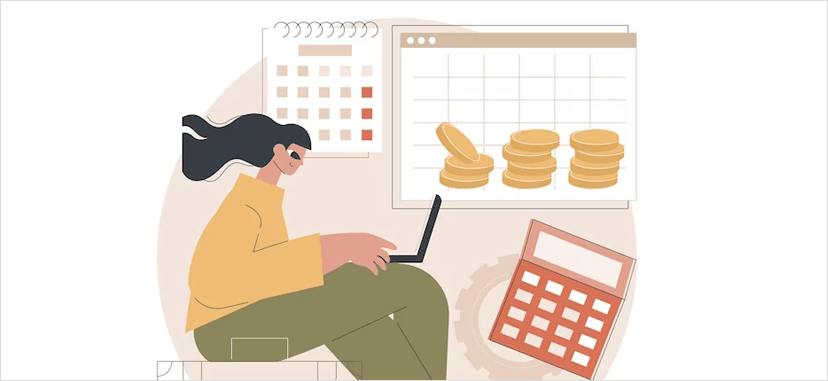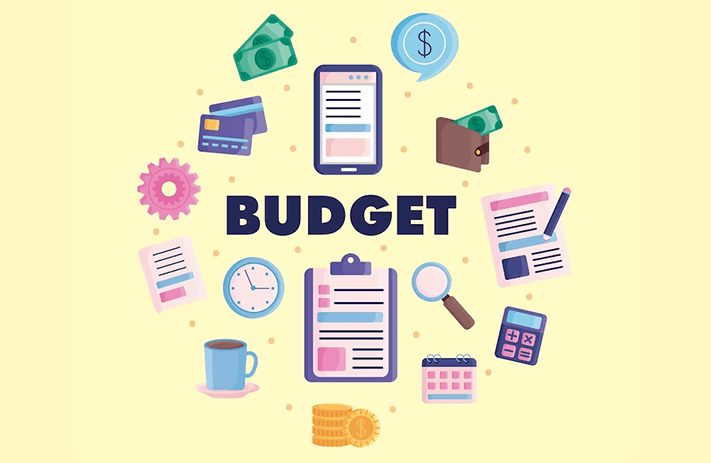
Click the button to start reading
A Guide to Better Budgeting & Forecasting Using Estimate at Completion (EAC) in Project Management
Managing a project from start to finish is a big undertaking for a project manager. One of the biggest challenges? Budgeting and forecasting! The uncertainty of costs and multiple variables can make budgeting for a project almost impossible. And that’s where Estimate at Completion (EAC) in project management comes in.
EAC is an Earned Value Management tool that can help project managers forecast future costs based on the actual cost (AC) and remaining costs to complete a project. Unlike the BAC (Budget at Completion), the EAC is updated throughout the project’s life, allowing project managers to calculate (and recalculate!) how much the project will cost when all is said and done – taking into consideration all unexpected changes along the way. EAC helps project managers identify budget issues early on and better allocate resources while keeping the project on budget.
Want to learn more about EAC in project management and how it can apply to your project? Then let’s take a closer look at EAC. How it fits into Earned Value Management, what it stands for, and why you might want to use it over other cost tools. We will also cover how to calculate EAC in project management, how it can help you with budgeting, and how it can help you manage your project more efficiently.

An Intro to Earned Value Management (EVM)
Earned Value Management (EVM) is a project management methodology used to measure project performance more comprehensively. It focuses on cost, schedule, and cost compared to project estimates. When project managers use EVM, they’re better able to identify potential problems early on to ensure the project stays on track.
EVM considers three variables: EVA indicators, variance analysis, and trend analysis and forecasting. But what are they, exactly? Here’s a look at each of these variables.
EVA Indicators. EVA indicators are used to measure a project’s performance. They include:
-
- Planned Value (PV): The budgeted cost of work to be completed by some future date.
- Earned Value (EV): The budgeted cost of work to date.
- Actual Cost (AC): The actual costs of completing the work so far.
Variance Analysis. Variance analysis compares EVA indicators to identify how the project is straying from the plan. There are types of variances:
-
- Schedule Variance (SV): The difference between earned and planned values. This shows whether the project is tracking ahead or behind schedule.
- Cost Variance (CV): The difference between the earned value and actual cost. This shows whether the project is over or under budget.
- Variance at Completion (VAC): The difference between the budget at completion (BAC) and the estimated cost at completion.
Trend Analysis and Forecasting. Trend analysis and forecasting is used to predict the future performance of a project. It considers past performance to identify trends and forecast the progress of the project.
EAC is part of “trend analysis and forecasting” as it helps project managers anticipate future project costs. And now that we’ve covered EVM, it’s time to move into EAC.

What’s the difference between EAC, BAC, and ETC
You can use two key metrics in project management to track your progress: Budget at Completion (BAC) and Estimate at Completion (EAC). But what is EAC and BAC?
BAC is the original budgeted cost of the project, while the meaning of EAC is the project’s estimated cost at completion. The critical difference between BAC and EAC is that BAC is a fixed number, whereas EAC considers changes to the project’s scope, schedule, or budget.
BAC in project management is set at the beginning of the project. It represents the total cost budgeted for the project. This is usually calculated by estimating the cost of tasks and resources required. BAC later serves as a baseline for project managers to track the actual costs against the project’s progress.
On the other hand, EAC in project management estimates the project’s total cost at the end, considering actual costs so far, the remaining budget, and changes in the project scope or budget. EAC helps project managers predict the project’s total cost, which is essential for budgeting.
Estimated to Completion (ETC) forecasts the budget needed to complete the remaining work. It’s a component of the EAC calculation, so it’s important to note that the terms are not interchangeable.

An Analogy for EAC, BAC, and ETC
Let’s think of your project like a road trip.
You created a plan for your destination and route and a detailed budget. But you also know breakdowns, road closures, and unforeseen costs may happen along the way. After you start driving, you find some of the motels on your route have raised their rates. The price of gas goes up, or a tire blows out. On the other hand, your map app suggests a side road that shaves a couple of hours off your journey. In addition, you’re able to rent equipment instead of buying expensive new gear. You see where we’re going with this!
With this analogy, your Budget at Completion (BAC) is what you thought the trip would cost before you started, while your Estimate at Completion (EAC) is an estimate of what you expect it will cost, kept updated throughout the trip. By checking in regularly on how you’re tracking towards the budget, you’re better able to optimize your trip (e.g., stop at the most affordable gas stations) or better allocate resources (e.g., skip a stop that’s out of the way).
Now, let’s look at a business example. Imagine you’re managing a consulting project. Your budget is $100,000 – that’s your estimated BAC. After completing 50% of the work, you do the math and find you’ve spent $60,000. With EAC, you will estimate the remaining budget based on the actual cost of work completed, the budgeted cost of the remaining work, and any changes in the project scope or budget. Based on your calculations, you find that the project will now cost $110,000 to complete. That’s your estimated EAC. In this example, your ETC would be $50,000.
Like estimating the remaining distance or fuel needed for a road trip, EAC helps project managers assess the remaining budget and resources needed to complete a project. This can help project managers identify potential budget overruns early on, allowing them to take corrective action to ensure the project stays on track.

How to Calculate Estimate at Completion
You can use several variables and formulas to calculate Estimate at Completion, so let’s walk through some of the most common ones.
The Variables
Below is a key to the variables used in the EAC formulas below.
- BAC = The budget for the project, estimated at the beginning
- EAC = The budget for the project, estimated after the project has already started
- ETC = An estimate of outstanding costs to complete the project
- AC = Actual costs, how much you’ve spent at a given point in a project.
- CPI = Cost performance index measures the cost efficiency of resources, calculated as the ratio of earned value of the work already completed to actual cost
- EV = Earned value, the measure of performed work, calculated by multiplying the percentage completed by the total project budget.
- PV = Planned value, usually hours or units produced compared to where you expected to be
- SPI = Schedule performance index determines how efficiently time is being spent according to the project schedule, calculated as earned value divided by planned value
The Basic EAC Formula: EAC = AC + ETC
This EAC formula – also called the bottom-up ETC – helps you calculate EAC without BAC. This formula is most used when the BAC wasn’t well estimated. To calculate EAC, you add together Actual Costs and Estimate to Completion. While this formula looks simple, it’s one of the most time-consuming as it relies on all team members to estimate the remaining work to calculate ETC.
When calculating ETC, you’ll need to decide how optimistic you are that the rest of the project will stay with the original plan, that problems will continue at the same level, or that things will worsen.
For the sake of simplicity, let’s say a project has a BAC of $100. But you’ve already spent $90, and based on how the project has gone, it’s clear that you’ll need more than $100 to complete the project. If one team member needs another $30, and the developer needs $50, using the bottom-up EAC formula, you’d get
$90 + ($30 + $50) = $170
That means your ETC is $170.
The Optimistic EAC Formula: EAC = AC + BAC – EV
You can use this EAC formula when you assume that your project will move forward at the budgeted rate. Since this equation uses EV, it considers the past variance from the BAC, but it doesn’t predict any variance in future costs.
Before using this formula, you should have some reason to expect that the variables that affected project costs in the first part of the project have been resolved and won’t be recurring issues.
The Recommended EAC Formula: EAC = BAC / CPI
Is the project moving along relatively smoothly? This simple formula says that the best way to get EAC is to take the Budget at Completion and divide it by Cost Performance Index. Your CPI is the difference between the earned value of the project and the actual cost. Of course, this formula assumes you don’t expect any changes in the CPI.
The Least Optimistic EAC Formula: EAC = AC + (BAC – EV) / (CPI x SPI)
Finally, what happens if the project is expected to face more scheduling or expense issues? This formula starts with AC and BAC, then adds Schedule Performance Index and Earned Value into the equation. This allows project managers to consider previous and future obstructions to the project for a more reliable estimated budget.
Conclusion on EAC
Project managers know the importance of setting an accurate project budget. But you also know that an estimate is just an estimate. Staying flexible and keeping your budget updated throughout the project ensures the most efficient management of cost and resources.
When you compare EAC to other budgeting and forecasting methods, EAC can give you a more accurate forecast of the total project cost. Since it relies on historical and current project performance data, you’ll have what you need to predict future costs reliably. And since it’s so adaptable, it can be used with most project management methodologies – Agile, Waterfall, and Hybrid.
With estimate at completion – and the right EAC formula for your situation – you’ll be better able to create more reliable cost estimates for your team. As a project manager, that means informed decisions about your projects’ resources and schedule and better project outcomes. Whether you are new to project management or have been at this for a while, one thing is for sure – understanding EAC is a valuable tool in your project management toolbox.
















